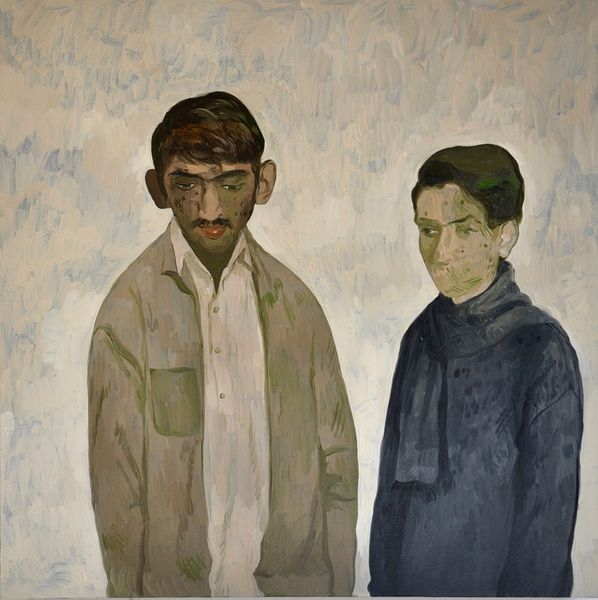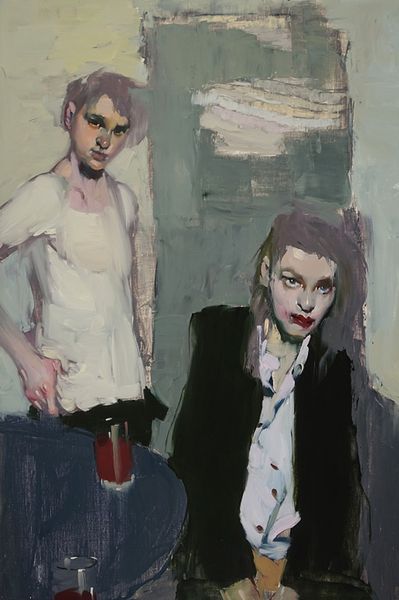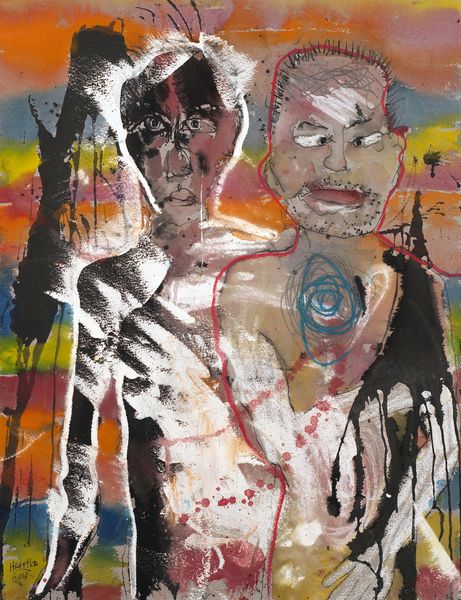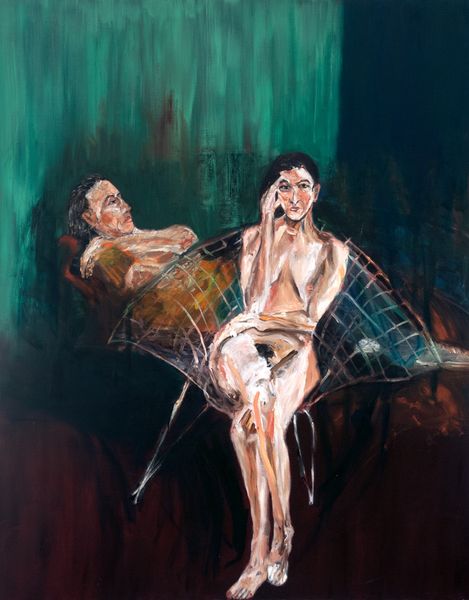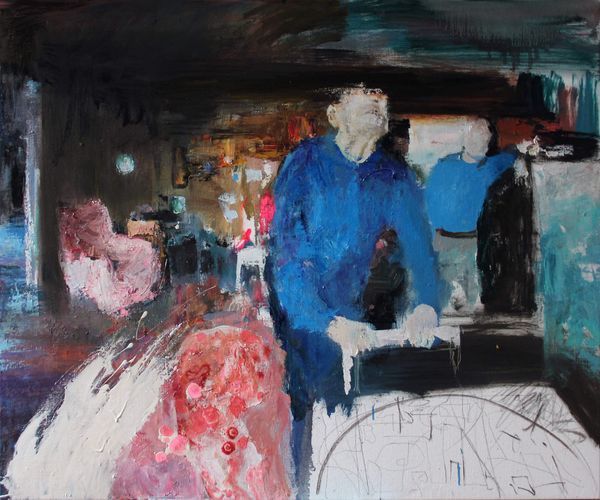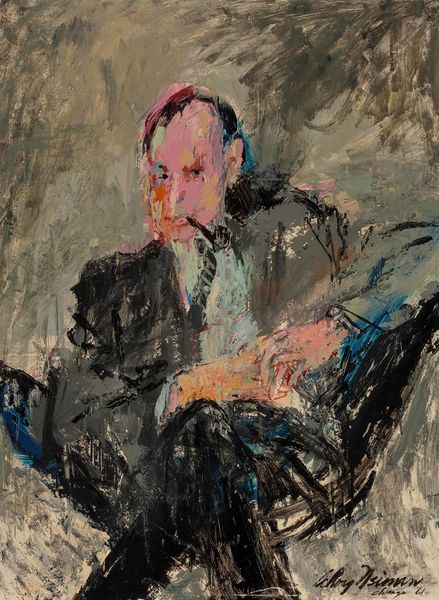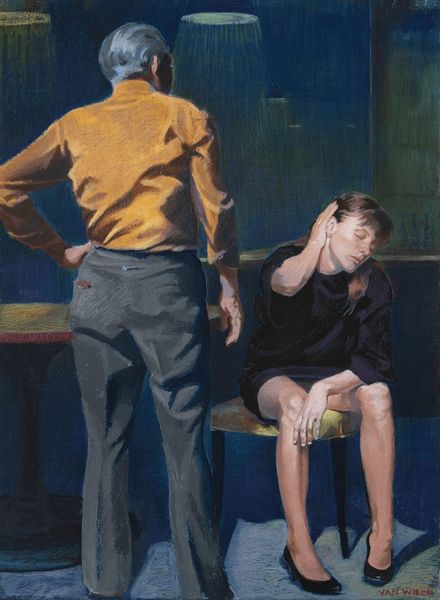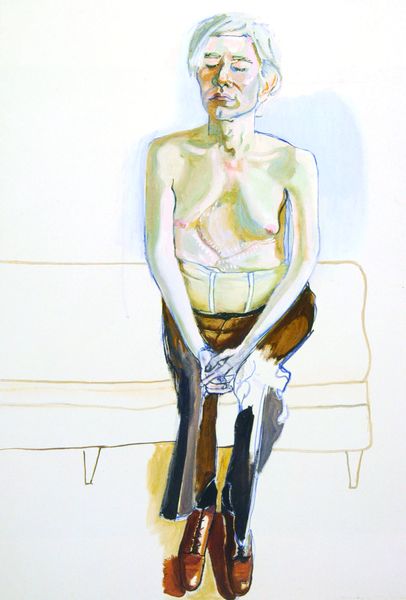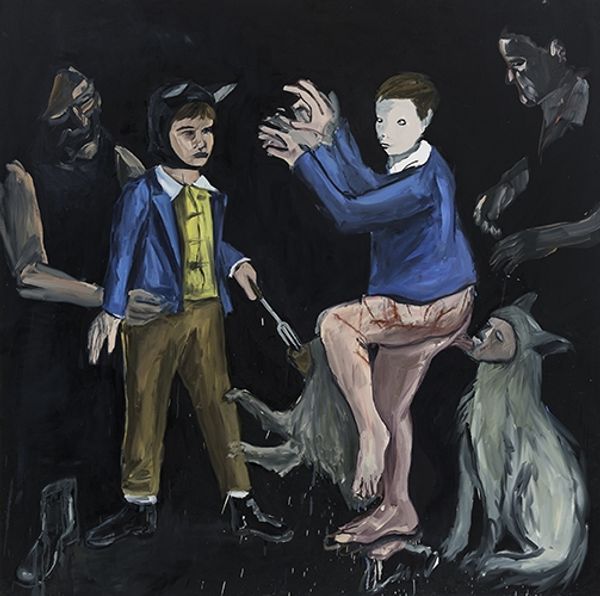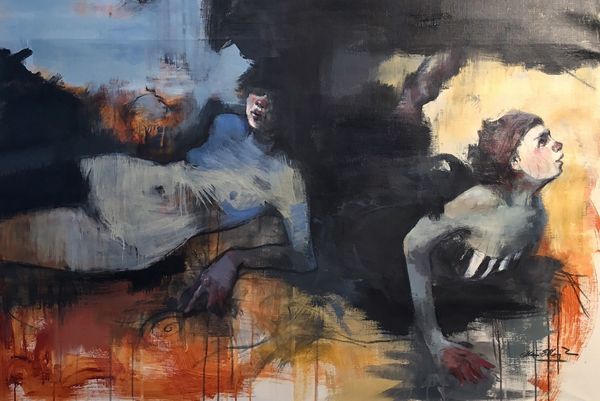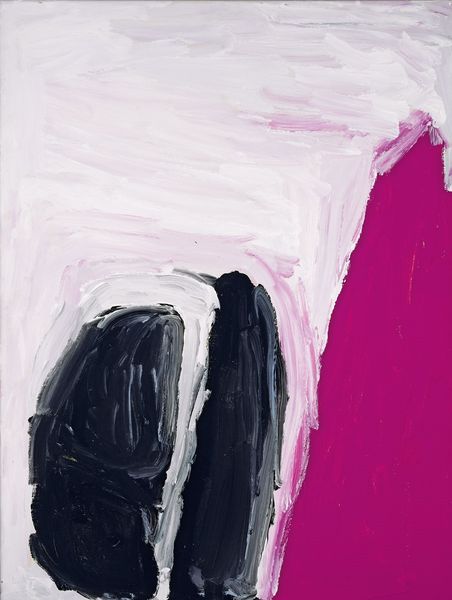
painting, oil-paint
#
portrait
#
contemporary
#
painting
#
oil-paint
#
figuration
#
oil painting
#
portrait drawing
Dimensions: 198 x 157.5 cm
Copyright: Michael Hafftka,Fair Use
Curator: The artwork we're looking at is Michael Hafftka's "Visitors," an oil painting from 1992, currently in a private collection. The figures are very stark, especially set against the darkness. What’s your initial reaction? Editor: The intensity in their gazes is palpable, and the raw brushstrokes convey a sense of unease. The darkness feels heavy, pressing in on the two figures. What cultural narratives do you think Hafftka is exploring? Curator: Given the sociopolitical context of the early 90s, especially the rise of identity politics and increasing social anxieties, the subjects’ direct stares challenge the viewer. Are they confronting or accusing us? Their bare feet and somewhat disheveled attire could represent vulnerability, stripped of social artifice. Do you think Hafftka is trying to comment on the performativity of identity, the masks we wear, and what happens when those masks are removed? Editor: That's a really interesting point. I hadn't considered the 'masks' aspect so directly, but seeing their expressions now in that context makes me wonder about the power dynamics. Is there a power imbalance at play, with the disheveled attire symbolizing the exposure of personal identity in a society fixated on appearance? Curator: It is not so obvious. Perhaps they reflect shared humanity. The ‘visitor’ motif implies a journey, or a transgression. Are they intruders, or refugees? Consider the tension between visibility and invisibility that shapes societal structures and our perceptions. Who has the privilege to be seen, and who is forced into the shadows? Editor: I hadn't really considered them visitors in the migrant sense. That really opens the artwork up. It gives the title much more gravity. Curator: Exactly! And think about Hafftka's artistic choices. The gestural brushstrokes create a sense of urgency and instability, reflecting the precariousness of social identities. So, this seemingly simple portrait unveils layers of meaning, challenging our assumptions about identity, belonging, and the act of looking itself. What do you take away? Editor: I see that the painting's starkness, when viewed through an activist lens, turns it into a powerful commentary on identity and the complexities of the human experience. Curator: Indeed. Hopefully, this analysis empowers us to challenge conventional perspectives, and fosters dialogues, about complex ideas!
Comments
No comments
Be the first to comment and join the conversation on the ultimate creative platform.
